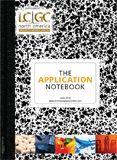Detection of Protein Heterogeneity by HPLC
The Application Notebook
Protein heterogeneity is generated by post-translational modification, decomposition, and a variety of other processes, including chemical modification, denaturation, and aggregation. Since antibodies and recombinant proteins are now widely used for therapeutic treatment, it is essential to evaluate their heterogeneity during development, stability testing, and in the quality control of the final product.
Protein heterogeneity is generated by post-translational modification, decomposition, and a variety of other processes, including chemical modification, denaturation, and aggregation. Since antibodies and recombinant proteins are now widely used for therapeutic treatment, it is essential to evaluate their heterogeneity during development, stability testing, and in the quality control of the final product. Analysis of the aggregates and denatured proteins is also important because they might increase the risk of anaphylaxis or immunoreaction.
The detection and separation of protein heterogeneity by HPLC can be performed using four different modes of TSKgel® chromatography columns: size exclusion (SEC), reversed phase (RPC), ion exchange (IEX) and hydrophobic interaction (HIC). In this application note, the use of a TSKgel Protein C4-300 reversed phase column is shown to be applicable for the evaluation of protein heterogeneity. The silica-based, wide pore 300 Å TSKgel Protein C4-300 column packed with 3 µm particles is optimized for the separation of large biomolecules such as proteins.
Experimental Conditions
Conditions for SEC

Conditions for RPC

Results and Discussion
Figures A & B show the analysis of antibody fragments. The monoclonal antibody human IgG1 was first papain digested and separated using a TSKgel G3000SWXL SEC column (Figure A). The intact form of the antibody, partially digested fragments, and completely digested fragments were separated on the basis of molecular size.

Figures A and B: Analysis of antibody fragments.
Two fractions were obtained from the SEC analysis and each fraction was analyzed with the TSKgel Protein C4-300 reversed phase column, as shown in Figure B. Several peaks were observed in each chromatogram of the analysis of Fc (fragment 1) and Fab (fragment 2), indicating that the antibody used in this study was heterogeneous in hydrophobicity.
Conclusions
TSKgel columns of IEC, SEC, HIC, and RPC modes are excellent choices to determine protein heterogeneity. The TSKgel Protein C4-300 column, which has a large pore size of 300 Å, is suitable for highly-efficient, reversed phase separations of proteins such as recombinant proteins, antibody fragments or PEGylated proteins.
Tosoh Bioscience LLC
3604 Horizon Drive, Suite 100, King of Prussia, PA 19406
tel. (484) 805-1219, fax (610) 272-3028
Website: www.tosohbioscience.com

SEC-MALS of Antibody Therapeutics—A Robust Method for In-Depth Sample Characterization
June 1st 2022Monoclonal antibodies (mAbs) are effective therapeutics for cancers, auto-immune diseases, viral infections, and other diseases. Recent developments in antibody therapeutics aim to add more specific binding regions (bi- and multi-specificity) to increase their effectiveness and/or to downsize the molecule to the specific binding regions (for example, scFv or Fab fragment) to achieve better penetration of the tissue. As the molecule gets more complex, the possible high and low molecular weight (H/LMW) impurities become more complex, too. In order to accurately analyze the various species, more advanced detection than ultraviolet (UV) is required to characterize a mAb sample.















